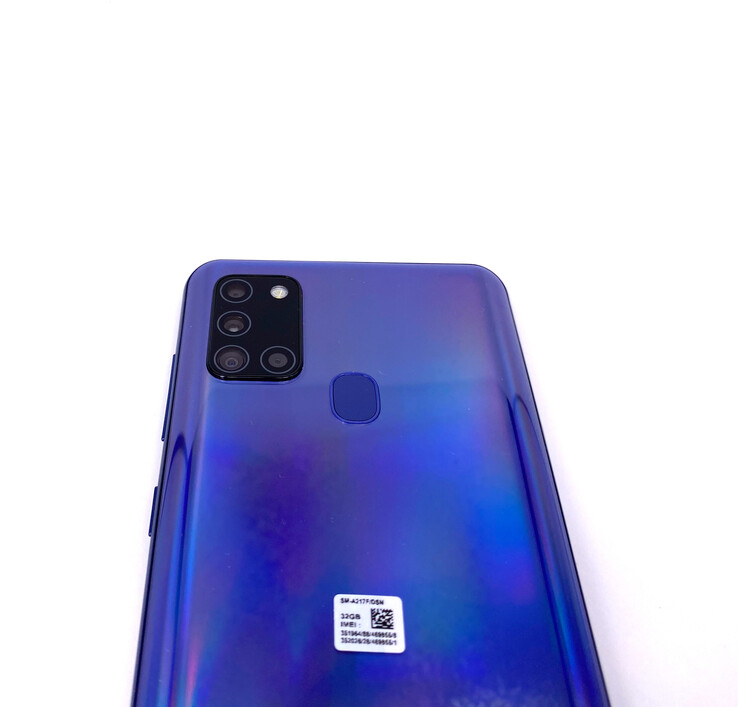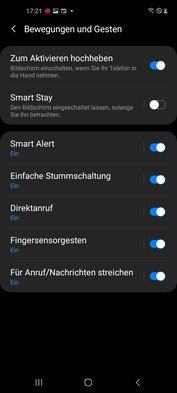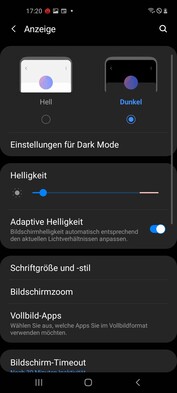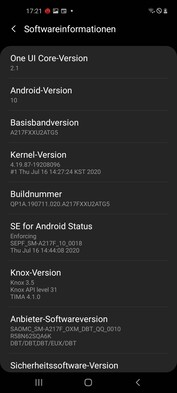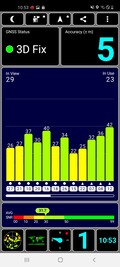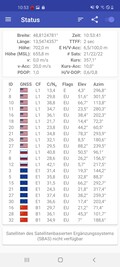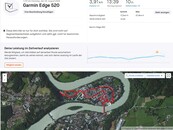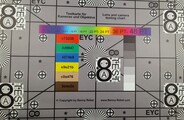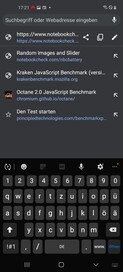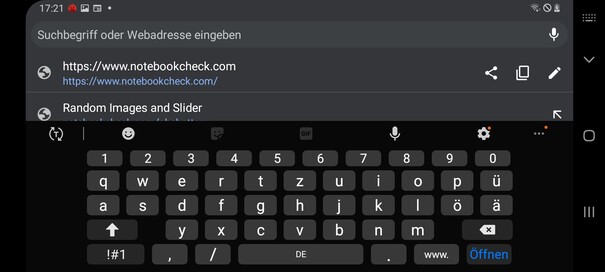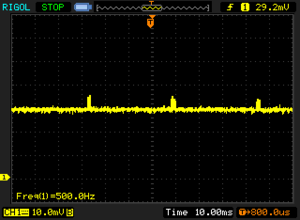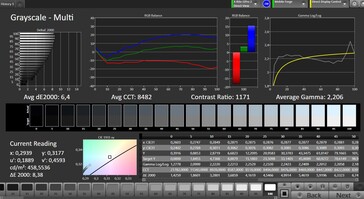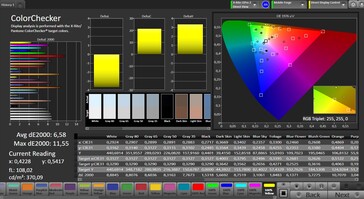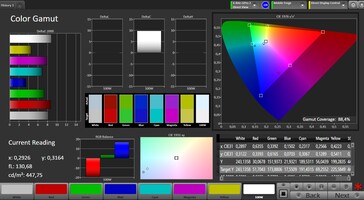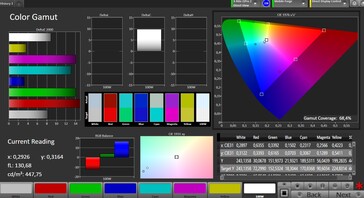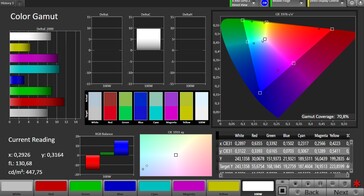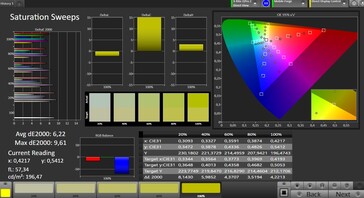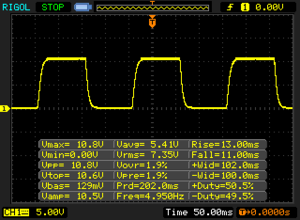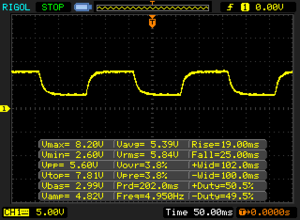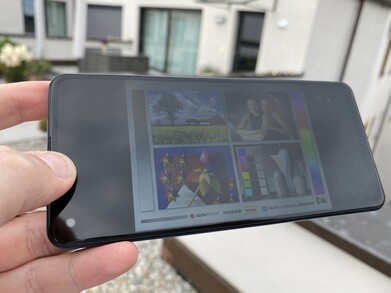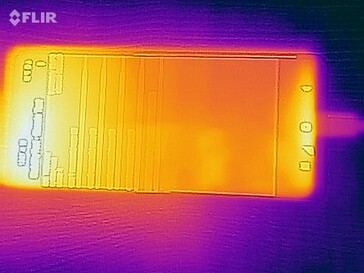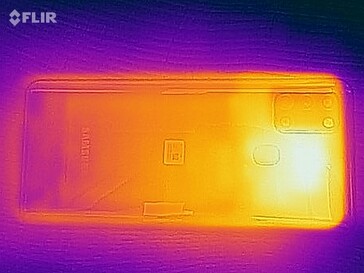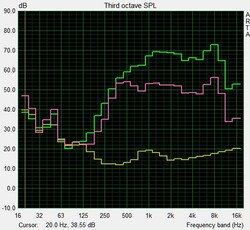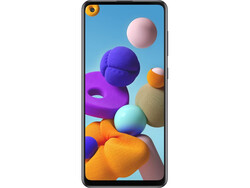Samsung Galaxy A21s Smartphone Review - Quad-camera on the cheap
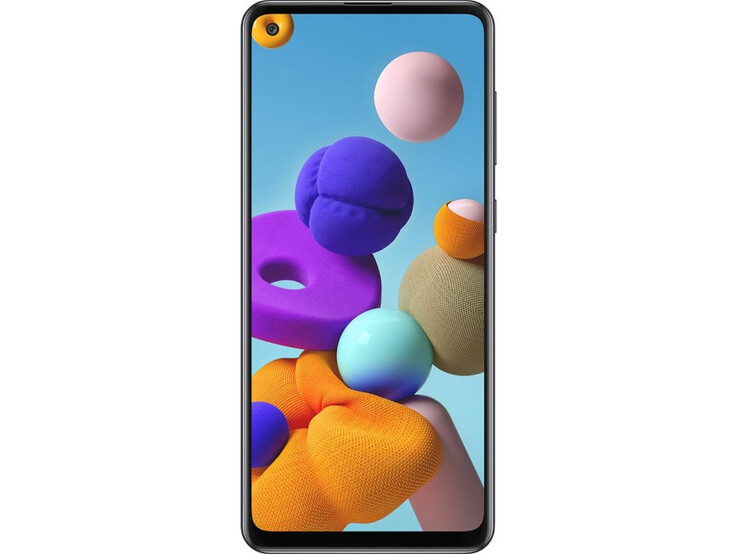
The midrange smartphones from Samsung’s Galaxy A and Galaxy M series have been selling extremely well for years, which is not entirely surprising because the manufacturer is constantly releasing new models designed to plug even the smallest holes in its midrange product stack. The Samsung Galaxy A21s retails for about 200 Euros (~$238), which is why it has mass appeal. The device offers four cameras on the back and a notchless display that looks quite modern.
There is a lot of competition in this price range. Both Xiaomi and Huawei constantly deliver 200-Euro (~$238) smartphones with a great price-to-performance ratio. Can Samsung keep up?
Comparison Devices
Rating | Date | Model | Weight | Drive | Size | Resolution | Best Price |
|---|---|---|---|---|---|---|---|
| 76.4 % | 08/2020 | Samsung Galaxy A21s Exynos 850, Mali-G52 MP1 | 192 g | 32 GB eMMC Flash | 6.50" | 1600x720 | |
| 75.1 % | 10/2020 | Sony Xperia L4 Helio P22 MT6762, PowerVR GE8320 | 178 g | 64 GB eMMC Flash | 6.20" | 1680x720 | |
| 80.7 % | 05/2020 | Xiaomi Redmi Note 9S SD 720G, Adreno 618 | 209 g | 128 GB UFS 2.0 Flash | 6.67" | 2400x1080 | |
| 76.6 % | 05/2020 | Huawei P Smart 2020 Kirin 710, Mali-G51 MP4 | 163 g | 128 GB eMMC Flash | 6.21" | 2340x1080 | |
| 78.2 % | 06/2020 | Realme 6i Helio G80, Mali-G52 MP2 | 199 g | 128 GB eMMC Flash | 6.50" | 1600x720 |
Case - Beautiful back, ugly edges
The Samsung Galaxy A21s comes in three colour schemes: white, black and blue. With all three models, when light hits the back it becomes refracted, thereby creating a rainbow effect. This effect looks very beautiful. When one holds the smartphone, which has a housing that is made of plastic, in the hand, one cannot help but notice the rough edges. The smartphone is quite rigid, though. However, it does creak when one tries to bend it.
The front looks very modern, thanks to its notchless design. The front-facing camera is located in the upper left corner and is rarely noticed in day-to-day use. The smartphone is a little too big for small hands. However, due to its rounded edges, it is still quite easy to hold. The Galaxy A21s weighs 192 grams, which is not unusual for such a device.
Connectivity - Two variants
The A21s comes with a modern USB-C port, which, unfortunately, operates at USB 2.0 speeds. This means that transferring data to and from the PC will take more time. There are two memory configurations: One features 32 GB of internal storage and 3 GB of RAM and the other 64 GB of storage space and 4 GB of RAM. We are reviewing the 32 GB version.
The storage capacity can be expanded with the help of a microSD card. Because there is a dedicated SD card slot, users can expand the storage space and enjoy dual-SIM functionality at the same time. The smartphone comes with Bluetooth 5.0 and an NFC chip, which means that the device can be used for contactless payments.
Software - Samsung smartphone with bloatware
The smartphone comes with Samsung’s proprietary OneUI 2.1 launcher, which is not universally loved. However, it is quite modern and neatly organised. This is why it is unlikely to confuse any Android veterans. The A21s runs Android 10 and the security patches, which were last updated in July of 2020, are not out of date.
One will have to learn to live with preinstalled applications. Most of these can only be disabled. A disabled application will not show up in the app drawer but will still take up storage space. Only a few applications can be completely uninstalled.
Communication & GPS - Fast Wi-Fi
The A21s only supports Wi-Fi 5. However, it achieves good transfer rates with our reference-grade router Netgear Nighthawk AX12 when compared to other similarly priced smartphones: Samsung’s smartphone achieves stable download and upload speeds of over 300 Mb/s.
The smartphone supports an average number of LTE frequency bands. It will not be able to connect to every LTE network on earth. However, it should still be functional in some countries outside one’s home continent. We have listed the supported LTE bands in the specifications section. Users should find out what LTE bands are supported in a given country before travelling there.
When it comes to reception, the A21s reveals itself to be rather mediocre. The competing devices always have one more signal bar in the same places in the inner city, whether outside or inside. However, the signal strength is good enough for day-to-day use.
| Networking | |
| iperf3 transmit AX12 | |
| Samsung Galaxy A21s | |
| Xiaomi Redmi Note 9S | |
| Huawei P Smart 2020 | |
| Sony Xperia L4 | |
| Realme 6i | |
| iperf3 receive AX12 | |
| Average of class Smartphone (last 2 years) | |
| Samsung Galaxy A21s | |
| Xiaomi Redmi Note 9S | |
| Huawei P Smart 2020 | |
| Sony Xperia L4 | |
| Realme 6i | |
The Samsung smartphone supports the following geolocation systems: GPS, GLONASS, BeiDou and Galileo. Indoors, our review device fails to establish a connection with the satellites. Outdoors, our review device takes a few seconds to acquire the user’s location and has a margin of error of five metres. This is a mediocre result. Here, other smartphones offer a bit more accuracy. The number of recognised satellites for the individual satellite networks is below average.
On our bike ride, we compare the A21s with our reference-grade navigator Garmin Edge 520. Here, the Samsung smartphone offers rather mediocre results. It did not struggle with the U-turn, but it did struggle with bends to the point where the Android smartphone seems to suggest that they were flying through buildings. This probably happened because the smartphone picked up wrong or too few location points. In historical parts of the city, the Galaxy A21s performs even worse and can only provide an approximation of the route we took.
When it comes to geolocation, we can only give a limited recommendation for the Samsung Galaxy A21s. One should only use the smartphone when the accuracy is not important and when one wants to know one’s approximate location.
Telephony & Call Quality - Ear-speaker good, microphone mediocre
The Samsung smartphone comes with a proprietary phone application, which is very clearly organised. However, it puts more focus on the dial pad than Google’s phone application. There is no mention of VoLTE and VoWiFi support. However, in practice, both of these functions are supported.
We like the sound quality of the ear-speaker. The voice of our conversation partner is clear and there is almost no background noise. However, we like the microphone less, because our own voice sounds rather tinny on the other end of the line. In loudspeaker mode, the voice of the caller sounds rather thin and as if it is very far away. When we speak we sound very tinny. However, quiet voices are easy to understand.
All in all, the call quality is okay. However, those who talk on the phone a lot can find better smartphones.
Cameras - A21s offers really good image quality
The 48 MP main camera on the back supports pixel binning, which allows four adjacent pixels to act as one. This improves photo quality. However, it also means that photographs have a resolution of 12 MP, which is good enough for the vast majority of situations. Those who need more pixels can select the 48 Megapixel mode in the camera application. There are three other cameras on the back: An ultra wide-angle camera, a macro camera and a depth sensor. Users can easily switch between the standard and the ultra wide-angle lens. However, zooming between the two lenses is not seamless. The macro lens is activated through a special mode.
Even though the photographs taken with the main camera appear a little blurry, the colour reproduction is good and the overall image quality is okay. This is rather unusual for a 200-Euro (~$238) smartphone. The photographs taken under low-light conditions could have been better exposed. However, anything that the camera picks up appears somewhat well-detailed. The ultra wide-angle camera produces underexposed and washed-out photographs. All in all, it is suitable for snapshots.
The photographs of our test patterns confirm our impression of the main camera. The images it takes are slightly blurry, but they are colour-accurate. The A21s can record video at 1080p30. The video quality is okay. However, the exposure changes only in steps. The videos look saturated but not particularly sharp.
Under low-light conditions, the 13 MP front-facing camera takes very poor selfies. However, under normal lighting conditions, the photographs taken with the front-facing camera appear well-detailed and sharp.
Image Comparison
Choose a scene and navigate within the first image. One click changes the position on touchscreens. One click on the zoomed-in image opens the original in a new window. The first image shows the scaled photograph of the test device.
Main lens flowerMain lens environmentMain lens low lightUltra wide angle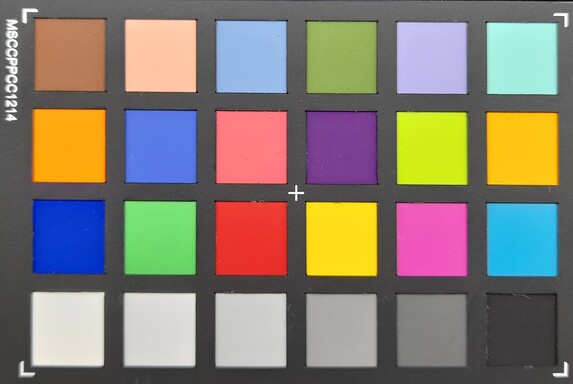
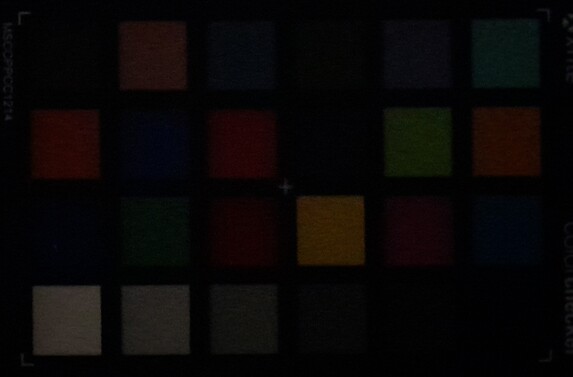
Accessories & Warranty - Headset included
The A21s comes with a 24-month warranty. Samsung has repair centres in many big cities, to which users can turn if something goes wrong with the smartphone.
The box contains the smartphone itself, a charger, a USB-C cable, a SIM card removal tool and a headset.
Input Devices & Handling - Reliable fingerprint sensor
The power button and the volume rocker are located on the right side. They have a clear actuation point. However, they do not feel very premium.
The touchscreen functions well and feels very responsive. There is a fast and reliable fingerprint scanner on the back. It can also be used for gestures. For instance, if you run your finger down the fingerprint sensor you can bring down the notification shade. The Galaxy A21s also supports other intelligent functions. For example, the display can automatically turn on when you pick up the smartphone.
The A21s also supports face recognition, which works without any issues.
Display - No SuperAMOLED for the Galaxy A21s
The A21s does not feature one of the highly regarded SuperAMOLED displays, for which Samsung is famous. Instead, it relies on a PLS panel with an LED backlight. This is why the screen does not support the burst mode, which raises the display brightness above the maximum level in especially bright environments. Nevertheless, the screen brightness of about 540 cd/m² is sufficient for cloudy and somewhat brighter days. When compared to other competing devices, the A21s offers a rather mediocre brightness level.
The pixel density is also rather mediocre. The Galaxy A21s comes with basically a 720p panel, which is not unusual for a device in this price range. However, both Xiaomi and Huawei offer smartphones with 1080p screens in this price segment. The difference is noticeable when pixel peeping, but in day-to-day use it is not particularly pronounced.
| |||||||||||||||||||||||||
Brightness Distribution: 91 %
Center on Battery: 540 cd/m²
Contrast: 1500:1 (Black: 0.36 cd/m²)
ΔE Color 6.58 | 0.5-29.43 Ø5
ΔE Greyscale 6.4 | 0.57-98 Ø5.3
88.4% sRGB (Calman 2D)
Gamma: 2.206
| Samsung Galaxy A21s PLS, 1600x720, 6.50 | Sony Xperia L4 IPS, 1680x720, 6.20 | Xiaomi Redmi Note 9S IPS, 2400x1080, 6.67 | Huawei P Smart 2020 IPS, 2340x1080, 6.21 | Realme 6i IPS, 1600x720, 6.50 | |
|---|---|---|---|---|---|
| Screen | 1% | 8% | -10% | 7% | |
| Brightness middle | 540 | 429 -21% | 622 15% | 446 -17% | 518 -4% |
| Brightness | 509 | 404 -21% | 612 20% | 448 -12% | 484 -5% |
| Brightness Distribution | 91 | 92 1% | 94 3% | 87 -4% | 89 -2% |
| Black Level * | 0.36 | 0.26 28% | 0.56 -56% | 0.51 -42% | 0.26 28% |
| Contrast | 1500 | 1650 10% | 1111 -26% | 875 -42% | 1992 33% |
| Colorchecker dE 2000 * | 6.58 | 6.14 7% | 3.98 40% | 5.22 21% | 5.8 12% |
| Colorchecker dE 2000 max. * | 11.55 | 10.51 9% | 7.33 37% | 8.66 25% | 11 5% |
| Greyscale dE 2000 * | 6.4 | 6.6 -3% | 4.5 30% | 6.8 -6% | 7.3 -14% |
| Gamma | 2.206 100% | 2.23 99% | 2.206 100% | 2.43 91% | 2.23 99% |
| CCT | 8482 77% | 8346 78% | 7361 88% | 7956 82% | 8037 81% |
| Color Space (Percent of sRGB) | 114.9 |
* ... smaller is better
Screen Flickering / PWM (Pulse-Width Modulation)
| Screen flickering / PWM detected | 500 Hz | ≤ 10 % brightness setting | |
The display backlight flickers at 500 Hz (worst case, e.g., utilizing PWM) Flickering detected at a brightness setting of 10 % and below. There should be no flickering or PWM above this brightness setting. The frequency of 500 Hz is relatively high, so most users sensitive to PWM should not notice any flickering. However, there are reports that some users are still sensitive to PWM at 500 Hz and above, so be aware. In comparison: 53 % of all tested devices do not use PWM to dim the display. If PWM was detected, an average of 17900 (minimum: 5 - maximum: 3846000) Hz was measured. | |||
We observed PWM flickering at 10% brightness and below. Susceptible individuals should try out the display before buying.
Our CalMAN test reveals that the screen suffers from a bluish cast. This is why the colours look somewhat washed-out and cool. There are no tools to adjust the colour temperature or colour reproduction. Moreover, pastel colours are not faithfully reproduced and the colour-space coverage is rather mediocre. Some competing devices come with more colour-accurate screens.
Display Response Times
| ↔ Response Time Black to White | ||
|---|---|---|
| 24 ms ... rise ↗ and fall ↘ combined | ↗ 13 ms rise | |
| ↘ 11 ms fall | ||
| The screen shows good response rates in our tests, but may be too slow for competitive gamers. In comparison, all tested devices range from 0.1 (minimum) to 240 (maximum) ms. » 48 % of all devices are better. This means that the measured response time is worse than the average of all tested devices (21.5 ms). | ||
| ↔ Response Time 50% Grey to 80% Grey | ||
| 44 ms ... rise ↗ and fall ↘ combined | ↗ 19 ms rise | |
| ↘ 25 ms fall | ||
| The screen shows slow response rates in our tests and will be unsatisfactory for gamers. In comparison, all tested devices range from 0.2 (minimum) to 636 (maximum) ms. » 70 % of all devices are better. This means that the measured response time is worse than the average of all tested devices (33.7 ms). | ||
Performance - Could have been faster
The Galaxy A21s features Samsung’s recently released Exynos 850 SoC. It has eight cores and can boost up to 2 GHz. Because there are no core clusters, both the flexibility and the energy efficiency of the SoC are reduced. Nevertheless, the octa-core SoC works rather well for an entry-level part and is able to trounce the Helio P22 in the Sony Xperia L4. However, when compared to the competition, the Samsung smartphone doesn't do so well, because many other manufacturers such as Xiaomi or Huawei offer smartphones with significantly faster SoCs.
The GPU is not particularly bad either. However, it offers a very limited level of performance. Nevertheless, it features support for many modern APIs, which should render many games playable at least in theory.
| GFXBench 3.0 | |
| on screen Manhattan Onscreen OGL (sort by value) | |
| Samsung Galaxy A21s | |
| Xiaomi Redmi Note 9S | |
| Huawei P Smart 2020 | |
| Realme 6i | |
| Average Samsung Exynos 850 (14 - 29, n=6) | |
| Average of class Smartphone (6.8 - 165, n=185, last 2 years) | |
| 1920x1080 1080p Manhattan Offscreen (sort by value) | |
| Samsung Galaxy A21s | |
| Xiaomi Redmi Note 9S | |
| Huawei P Smart 2020 | |
| Realme 6i | |
| Average Samsung Exynos 850 (15 - 16, n=6) | |
| Average of class Smartphone (9.2 - 363, n=185, last 2 years) | |
| GFXBench 3.1 | |
| on screen Manhattan ES 3.1 Onscreen (sort by value) | |
| Samsung Galaxy A21s | |
| Xiaomi Redmi Note 9S | |
| Huawei P Smart 2020 | |
| Realme 6i | |
| Average Samsung Exynos 850 (8.2 - 20, n=6) | |
| Average of class Smartphone (3.7 - 158, n=185, last 2 years) | |
| 1920x1080 Manhattan ES 3.1 Offscreen (sort by value) | |
| Samsung Galaxy A21s | |
| Xiaomi Redmi Note 9S | |
| Huawei P Smart 2020 | |
| Realme 6i | |
| Average Samsung Exynos 850 (9.4 - 9.4, n=6) | |
| Average of class Smartphone (6.2 - 279, n=185, last 2 years) | |
| AnTuTu v8 - Total Score (sort by value) | |
| Samsung Galaxy A21s | |
| Xiaomi Redmi Note 9S | |
| Realme 6i | |
| Average Samsung Exynos 850 (119981 - 133391, n=4) | |
The Galaxy A21s does not offer a very good experience when browsing the Internet, despite its fast Wi-Fi. It takes a while for the websites to load, and users will have to wait even longer for the images to load. Here, Samsung should spend some time optimising the SoC, because the Galaxy A21s performs much worse than the rest of the competition in the browser benchmarks.
| Jetstream 2 - Total Score | |
| Average of class Smartphone (13.8 - 351, n=173, last 2 years) | |
| Xiaomi Redmi Note 9S (Chrome 81) | |
| Huawei P Smart 2020 (Chrome 81) | |
| Realme 6i (Chrome 81) | |
| Average Samsung Exynos 850 (18.4 - 23, n=6) | |
| Samsung Galaxy A21s (Chrome 84) | |
| JetStream 1.1 - Total Score | |
| Average of class Smartphone (last 2 years) | |
| Xiaomi Redmi Note 9S (Chrome 81) | |
| Realme 6i (Chrome 81) | |
| Huawei P Smart 2020 (Chrome 81) | |
| Average Samsung Exynos 850 (27.1 - 32.5, n=4) | |
| Samsung Galaxy A21s (Chrome 84) | |
| Speedometer 2.0 - Result | |
| Average of class Smartphone (14.9 - 445, n=157, last 2 years) | |
| Xiaomi Redmi Note 9S (Chome 81) | |
| Huawei P Smart 2020 (Chome 81) | |
| Realme 6i (Chrome 81) | |
| Average Samsung Exynos 850 (15 - 16.7, n=6) | |
| Samsung Galaxy A21s (Chome 84) | |
| WebXPRT 3 - Overall | |
| Average of class Smartphone (39 - 304, n=122, last 2 years) | |
| Xiaomi Redmi Note 9S (Chrome 81) | |
| Huawei P Smart 2020 (Chrome 81) | |
| Realme 6i (Chrome 81) | |
| Average Samsung Exynos 850 (35 - 39, n=6) | |
| Samsung Galaxy A21s (Chrome 84) | |
| Octane V2 - Total Score | |
| Average of class Smartphone (4633 - 89112, n=213, last 2 years) | |
| Xiaomi Redmi Note 9S (Chrome 81) | |
| Realme 6i (Chrome 81) | |
| Huawei P Smart 2020 (Chrome 81) | |
| Average Samsung Exynos 850 (4875 - 5904, n=6) | |
| Samsung Galaxy A21s (Chrome 84) | |
| Mozilla Kraken 1.1 - Total | |
| Samsung Galaxy A21s (Chrome 84) | |
| Average Samsung Exynos 850 (8327 - 9397, n=6) | |
| Huawei P Smart 2020 (Chrome 81) | |
| Realme 6i (Chrome 81) | |
| Xiaomi Redmi Note 9S (Chrome 81) | |
| Average of class Smartphone (388 - 9999, n=173, last 2 years) | |
* ... smaller is better
One cannot expect anything better than eMMC memory from a 200-Euro (~$238) smartphone. Here, Samsung gets very good results out of embedded MultiMediaCard memory, particularly when it comes to sequential write speeds. Nevertheless, there are similarly priced smartphones, such as the Xiaomi Redmi Note 9S, which come with significantly faster UFS memory.
| Samsung Galaxy A21s | Sony Xperia L4 | Xiaomi Redmi Note 9S | Huawei P Smart 2020 | Realme 6i | Average 32 GB eMMC Flash | Average of class Smartphone | |
|---|---|---|---|---|---|---|---|
| AndroBench 3-5 | -7% | 43% | -5% | 36% | -29% | 447% | |
| Sequential Read 256KB | 307 | 293.4 -4% | 496.6 62% | 282.1 -8% | 309.5 1% | 242 ? -21% | 1508 ? 391% |
| Sequential Write 256KB | 104.3 | 165 58% | 214.8 106% | 168.3 61% | 256.4 146% | 100.5 ? -4% | 1118 ? 972% |
| Random Read 4KB | 77.2 | 61.2 -21% | 137 77% | 41.2 -47% | 73.5 -5% | 43.2 ? -44% | 247 ? 220% |
| Random Write 4KB | 89.5 | 22.5 -75% | 123.6 38% | 61.1 -32% | 150.9 69% | 22.4 ? -75% | 272 ? 204% |
| Sequential Read 256KB SDCard | 80 ? | 83.5 ? 4% | 74.5 ? -7% | 76.1 ? -5% | 84.6 ? 6% | 71.8 ? -10% | |
| Sequential Write 256KB SDCard | 66.4 ? | 62.5 ? -6% | 54.9 ? -17% | 67 ? 1% | 64.5 ? -3% | 52.9 ? -20% |
Gaming - Mediocre gaming device
Gaming on the A21s is not particularly fun, especially when it comes to demanding titles: Games such as Asphalt 9 or PUBG Mobile take a very long time to load, and that does not only apply to the initial launch. This applies to every launch. The in-game loading times are also suboptimal.
In more-demanding titles such as the racing game Asphalt 9, the A21s rarely hits 30 FPS, which means that users will have to deal with constant slowdown and stuttering when gaming. The Samsung smartphone is able to achieve over 30 FPS in PUBG Mobile on the lowest settings. Nevertheless, it is not suited for demanding games.
Both the touchscreen and the motion sensor work without any problems.
Emissions - Samsung’s smartphone does not throttle
Temperature
(+) The maximum temperature on the upper side is 39.1 °C / 102 F, compared to the average of 35 °C / 95 F, ranging from 21.9 to 56 °C for the class Smartphone.
(±) The bottom heats up to a maximum of 41.3 °C / 106 F, compared to the average of 33.8 °C / 93 F
(+) In idle usage, the average temperature for the upper side is 31.7 °C / 89 F, compared to the device average of 32.7 °C / 91 F.
Speakers
There is a small mono-speaker behind a grill on the bottom of the device. It offers a rather decent sound quality. Although it could have been a little louder, it is still good enough for listening to pop music, even if the mids and the lows are almost completely missing. At maximum volume, the sound reproduction becomes somewhat inaccurate. However, if you lower the volume a little, then the audio will be reproduced well.
When listening to classical music, the limitations of the speaker become apparent: The sound is not very deep and individual instruments clash together to produce a cacophony. However, this can be ameliorated by using external speakers or a set of headphones, which can be connected via the 3.5-mm audio jack or Bluetooth. Both Bluetooth and the headphone jack work without any issues.
Samsung Galaxy A21s audio analysis
(±) | speaker loudness is average but good (79.5 dB)
Bass 100 - 315 Hz
(-) | nearly no bass - on average 62.2% lower than median
(+) | bass is linear (0% delta to prev. frequency)
Mids 400 - 2000 Hz
(-) | nearly no mids - on average 62.2% lower than median
(+) | mids are linear (0% delta to prev. frequency)
Highs 2 - 16 kHz
(-) | nearly no highs - on average 62.2% lower than median
(+) | highs are linear (0% delta to prev. frequency)
Overall 100 - 16.000 Hz
(-) | overall sound is not linear (128.9% difference to median)
Compared to same class
» 98% of all tested devices in this class were better, 2% similar, 0% worse
» The best had a delta of 12%, average was 38%, worst was 134%
Compared to all devices tested
» 99% of all tested devices were better, 1% similar, 0% worse
» The best had a delta of 4%, average was 25%, worst was 134%
Sony Xperia L4 audio analysis
(±) | speaker loudness is average but good (75.6 dB)
Bass 100 - 315 Hz
(-) | nearly no bass - on average 29.7% lower than median
(±) | linearity of bass is average (8.9% delta to prev. frequency)
Mids 400 - 2000 Hz
(±) | higher mids - on average 6.9% higher than median
(±) | linearity of mids is average (9.6% delta to prev. frequency)
Highs 2 - 16 kHz
(+) | balanced highs - only 2.4% away from median
(+) | highs are linear (4.2% delta to prev. frequency)
Overall 100 - 16.000 Hz
(±) | linearity of overall sound is average (29.8% difference to median)
Compared to same class
» 74% of all tested devices in this class were better, 4% similar, 22% worse
» The best had a delta of 12%, average was 38%, worst was 134%
Compared to all devices tested
» 86% of all tested devices were better, 3% similar, 11% worse
» The best had a delta of 4%, average was 25%, worst was 134%
Battery Life - Not efficient
Energy Consumption
As was previously mentioned, the power consumption is not optimal, because the CPU does not feature a mixture of low-power and high-performance cores. The minimum power draw of 1.5 watts is very high. Given the level of performance on offer, the maximum energy consumption of 6.6 watts is quite high. Nevertheless, it is still okay.
| Off / Standby | |
| Idle | |
| Load |
|
| Samsung Galaxy A21s 5000 mAh | Xiaomi Redmi Note 9S 5020 mAh | Huawei P Smart 2020 3400 mAh | Realme 6i 5000 mAh | Average Samsung Exynos 850 | Average of class Smartphone | |
|---|---|---|---|---|---|---|
| Power Consumption | -3% | 8% | 35% | 18% | 14% | |
| Idle Minimum * | 1.5 | 1.5 -0% | 1 33% | 0.37 75% | 1.2 ? 20% | 0.897 ? 40% |
| Idle Average * | 2.1 | 2.1 -0% | 2.1 -0% | 1.62 23% | 1.733 ? 17% | 1.452 ? 31% |
| Idle Maximum * | 2.9 | 2.5 14% | 2.5 14% | 1.69 42% | 2.28 ? 21% | 1.629 ? 44% |
| Load Average * | 4.6 | 5.2 -13% | 4.3 7% | 3.61 22% | 3.83 ? 17% | 5.55 ? -21% |
| Load Maximum * | 6.6 | 7.5 -14% | 7.5 -14% | 5.9 11% | 5.73 ? 13% | 8.31 ? -26% |
* ... smaller is better
Battery Life
The 5000-mAh battery ensures a great battery runtime of 15 h 43 m in our Wi-Fi test. Users can spend this much time browsing the Internet before the battery dies. In day-to-day use, the smartphone should last three days on a full charge. However, the Xiaomi Redmi Note 9S can get more battery life out of a battery with a similar capacity.
The charger has a rated output of 15 watts, which is sufficient for our definition of fast charging. However, because of having a large battery, the A21s takes over two hours to fully charge.
| Samsung Galaxy A21s 5000 mAh | Sony Xperia L4 3580 mAh | Xiaomi Redmi Note 9S 5020 mAh | Huawei P Smart 2020 3400 mAh | Realme 6i 5000 mAh | |
|---|---|---|---|---|---|
| Battery Runtime | -17% | 13% | -36% | 40% | |
| Reader / Idle | 2009 | 2263 13% | 1325 -34% | ||
| H.264 | 1087 | 1269 17% | 489 -55% | ||
| WiFi v1.3 | 943 | 783 -17% | 1187 26% | 523 -45% | 1318 40% |
| Load | 287 | 279 -3% | 264 -8% |
Pros
Cons
Verdict - Good, but not perfect
The Samsung Galaxy A21s is a low-priced midrange device, whose main selling points include a large battery, modern design and a flexible camera system.
The battery life is impressive, even if it is not record-breaking. However, because of such a big battery, the device takes a while to charge. The cameras take good pictures and record decent videos for a smartphone in this price range. A more flexible zoom would have been nice, though. Other positive aspects include the up-to-date security patches, the okay speaker, the fairly bright screen and very fast Wi-Fi.
The Samsung Galaxy A21s is cheap and has some strong selling points such as the giant battery and the good camera. However, it has some weaknesses, too.
What is the use of fast Wi-Fi, when the SoC takes forever to load web pages? The centrepiece of the Samsung Galaxy A21s is okay for a 200-Euro (~$238) smartphone, but it has significant weaknesses in terms of energy-efficiency and performance, which unnecessarily bog the smartphone down. Other negative aspects include the poor navigation performance, poor build quality with sharp edges and the mediocre speaker.
All in all, the Samsung Galaxy A21s is a good device for those who need a smartphone with a large battery and okay cameras. Howbeit, there are distinct drawbacks, so prospective buyers should weigh up the pros and cons.
Samsung Galaxy A21s
-
08/31/2020 v7
Florian Schmitt


 Deutsch
Deutsch English
English Español
Español Français
Français Italiano
Italiano Nederlands
Nederlands Polski
Polski Português
Português Русский
Русский Türkçe
Türkçe Svenska
Svenska Chinese
Chinese Magyar
Magyar